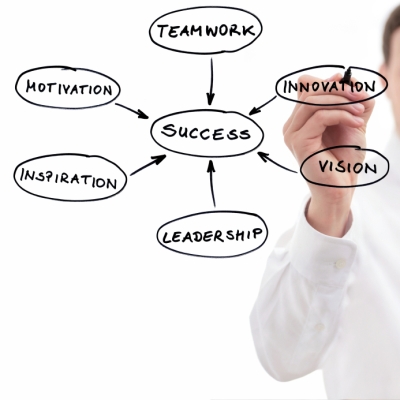Think about your last team meeting. I think it is fair to say that most team meetings are guided by one person standing in front of the white board recording thoughts and explaining concepts to the group. If someone else wants to explain an idea or contribute to the discussion, then they might take the place in front of the white board. They might not even write on the whiteboard and so their thoughts are not even recorded. This is a form of collaboration in the workplace, but I am not convinced that this type of collaboration leads to the innovation and success I imagine most businesses desire.
Historically, white boards have been the epitome of collaboration. However, imagine how chaotic this becomes when ten people end up standing in front of a white board, different colored words and diagrams strewn about the whiteboard, and no clear order. Then, at the conclusion of the meeting, the collaborators scatter back to their desks without a written record of what was discussed. One person may bring out a smartphone to snap a picture and may or may not share it with the rest of the group. At SmartDraw, we use Visual Meetings with visuals like mind maps created in real time with SmartDraw. These visuals are projected in front of the room to drive the meeting and everyone's thoughts are recorded within the mind map for a clear record. After the meeting, this visual can then easily be emailed to the entire team and saved for future reference for both team members at the meeting or for team members absent from the meeting. Plus, when a visual like a mind map is used there is always clear order to the ideas shared during the meeting, especially if the team uses a mind map. Topics are easily broken up into concepts and the relationship between the concepts can be easily understood.

Is this what collaboration actually is? Yes. Collaboration is a process through which a group of people constructively explore their ideas to search for a solution that extends one's own limited vision. Today, as businesses move at an ever increasing rate, working in isolation puts companies at a disadvantage which is why visual meetings, which engage everyone in the room, are important. Collaboration leads to the innovative solutions and results that businesses need to succeed. According to a whitepaper written by anecdote, a company that crafts company stories, there are three types of collaboration:
- Team collaboration
- Community collaboration
- Network collaboration
In each of these types of collaboration, new ideas are generated and explored. However, collaboration is not just a single event or even something easy to do effectively without practice. Collaboration is a process that continues and betters over time. The more a group of people collaborate, the more significant the working relationships become. As working relationships become more comfortable and fluid, teams are better able to share and discuss ideas, which means the results will be increasingly successful. So how do you get started?
I've brainstormed these tips for starting to create a more collaborative workplace:
- Communicate: This may seem obvious, but I believe it is still worth mentioning. In fact, it may be the most important step. Share ideas with your coworkers, contacts, managers, and anyone who will listen. Remember the saying "two heads are better than one"? When you challenge yourself to communicate an idea, even in the beginning stages, it forces you to clarify your thinking so another person will understand. Just the act of communicating may develop your idea. Plus, by opening up your idea for critique, you will get more ideas from the person with whom you shared the idea.
- Visualize: Yes, you should visualize where you want your idea to go. But even more importantly, use visuals to communicate your ideas and clarify your ideas at the most simplistic level. Visuals are a great facilitator to aid strategic thinking and planning. In fact, many of us already think and communicate visually whether we realize it or not. The human brain can and does convert auditory and kinesthetic information to visual information, but the efficiency of the process is dependent upon the complexity and speed at which information is being communicated. Visuals are scientifically proven to be up to 6 times more effective than words alone.
- Acknowledge: When building collaborative relationships, it is important to give credit when your collaborator has contributed a good idea, hard work, or even good constructive criticism. Collaborative relationships work best when team members feel appreciated and valued. Additionally, it is important to remember that each team member is a part of the team for a reason - they are competent in their specialty. Each person has their own way of finishing a task, which may not be the same as how you would complete the task. Get where I am going with this? Do not micromanage your team members. When you feel the need to micromanage a team member, you are sending a clear message that you do not trust them to complete their job. This can be detrimental to your collaborative relationship.
What other tips would you include for a company looking to become more collaborative? If you are at a loss for the first tactic to try, I would suggest trying to incorporate visual meetings. They are highly collaborative and engaging for all team members. Plus, they revolve around visuals that will clearly communicate the main goal and keep the team on track.